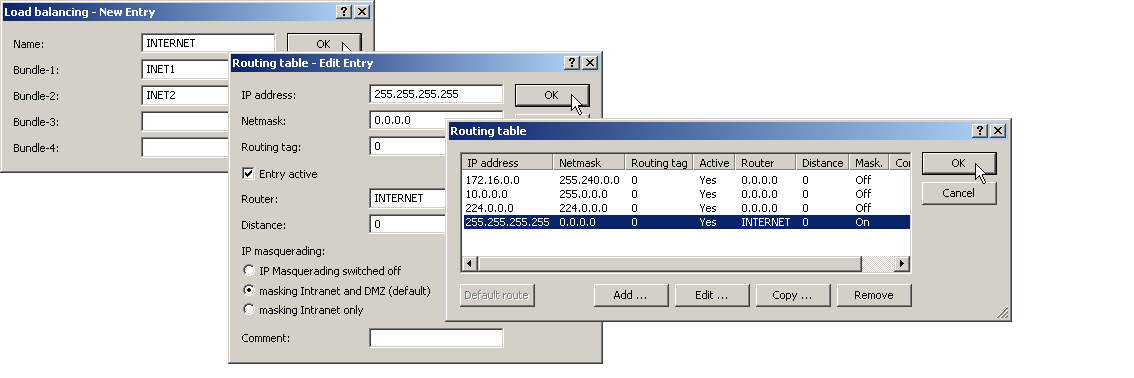The first step in setting up dynamic load balancing is to define the Internet accesses, e.g. 'INET1' and 'INET2', with the aid of the LANconfig Wizard.
- To distribute Internet traffic across different DSL interfaces, the individual remote
sites are assigned to different DSL ports in LANconfig under . Console:

- The two DSL remotes are then assigned to a new virtual remote site 'INTERNET' in
the load balancing list in LANconfig under . Console:

- The virtual remote site is entered into the routing table as the router for the default
route in LANconfig under / / . Console:
Note: The virtual remote site 'INTERNET' is now to be used for Internet access. When data are routed over this connection, the load balancing table will cause the "real" DSL connections to be established and the data will be transmitted over the selected DSL ports.
- Routing tags can be used for the application-dependent direction of data traffic to
specific DSL ports. If, for example, outgoing e-mail traffic is to be routed over a certain
DSL interface with a certain IP address, then the appropriate firewall rule must be created
that transmits e-mail data traffic from all local stations to the mail server and sets the
routing tag to '1'; do this with LANconfig under . Console:

